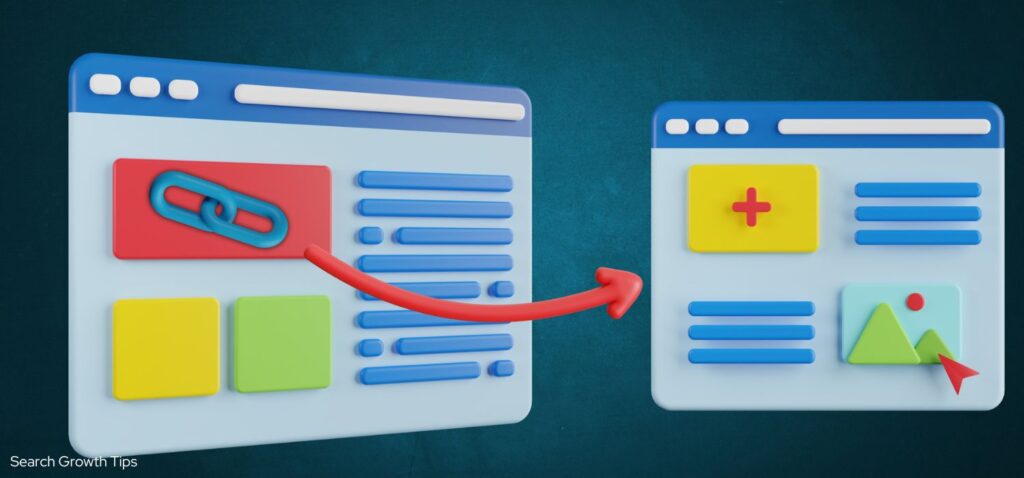Backlinks are one of the most important elements of SEO. They signal to Google that your site is trustworthy, authoritative, and relevant, which can boost your rankings in search results. However, not all backlinks are created equal, and buying them can often lead to penalties that do more harm than good. Instead of purchasing backlinks, it’s better to focus on building natural, high-quality links that can elevate your SEO game sustainably. Here’s how you can do that.
What Are Backlinks, and Why Do They Matter?
A backlink is simply a link from one website to another. Search engines like Google see backlinks as “votes” of confidence from other sites. If a credible website links to your content, it shows Google that your content is valuable, which helps you rank higher in search engine results pages (SERPs). The more quality backlinks you have, the more likely you are to outrank your competitors.
Types of Backlinks That Matter
Before diving into how to get backlinks, it’s important to know which backlinks actually help your SEO. Here are a few types of backlinks that matter most:
- Authority Backlinks
Links from high-authority sites (like news outlets, educational institutions, and government websites) carry more weight than links from smaller or newer sites. Google sees these as more credible and trustworthy. - Relevant Backlinks
Backlinks from sites that are relevant to your niche or industry are extremely valuable. A backlink from a blog post on “fitness tips” to your “fitness supplement” website makes more sense than one from an unrelated site like a recipe blog. - Editorial Backlinks
These are the links you get naturally when other websites find your content useful and link to it on their own. These carry the most weight because they are not manipulated and indicate genuine value in your content. - Contextual Backlinks
These are links embedded naturally within the content of an article, rather than in footers or sidebars. Google sees contextual backlinks as more valuable because they flow with the topic at hand. - Dofollow vs. Nofollow Backlinks
“Dofollow” links allow search engines to follow them, passing on “link juice” or authority to your website. “Nofollow” links, on the other hand, don’t pass on link juice, but they can still bring traffic and may be useful for brand awareness. Focus on getting “dofollow” links, but a diverse backlink profile with both types can look more natural.
How to Build Natural Backlinks
Now that you know what kinds of backlinks matter, let’s look at how you can build them naturally.
1. Create High-Quality, Shareable Content
One of the most effective ways to get natural backlinks is to create valuable content that people want to link to. This could be in the form of:
- In-depth guides: Long-form, well-researched articles tend to attract links because they provide comprehensive information that others in your niche may want to reference.
- Infographics: Visual content like infographics is highly shareable. Other sites may embed your infographic and link back to you as the original source.
- Original research and case studies: Unique data or research that hasn’t been published anywhere else can attract tons of backlinks from bloggers, journalists, and industry experts.
- List posts or “best of” articles: These types of posts, such as “Top 10 tools for marketers,” are popular and often get linked by other bloggers writing about similar topics.
The key here is to produce content that is so useful or so interesting that others in your industry will naturally want to share it and link back to you.
2. Guest Blogging
Guest blogging involves writing articles for other websites in your niche and getting a backlink in return, typically in the author bio or within the content itself. When done properly, guest blogging can build both authority and relevant backlinks.
Here’s how you can start:
- Identify high-quality blogs in your industry. They should have an engaged audience and solid domain authority.
- Reach out with a personalized pitch offering unique, high-value content that fits their readers’ interests.
- Write valuable posts that showcase your expertise while subtly linking back to your own website or a specific page relevant to the content.
Remember, focus on quality over quantity when it comes to guest blogging. A handful of links from high-authority sites are far more valuable than dozens of low-quality backlinks.
3. Broken Link Building
Broken link building is a win-win: you help a website fix a broken link, and in return, you gain a backlink. Here’s how it works:
- Find broken links on relevant websites in your niche using tools like Check My Links (a Chrome extension) or Ahrefs’ broken link checker.
- Create or identify content on your site that would be a good replacement for the broken link.
- Reach out to the site owner and suggest your content as a replacement.
Since you’re providing value by helping them fix their broken link, many webmasters will be happy to link back to you.
4. Resource Pages
Many websites have resource pages that link to useful tools, guides, or articles related to their niche. Getting your content featured on these pages is an excellent way to score backlinks from authoritative sites.
Here’s how to do it:
- Find resource pages in your industry. Use search queries like “best [niche] resources” or “useful [niche] websites.”
- Create content that would fit well on their resource page.
- Reach out to the website owner, explaining why your content is a valuable addition to their list.
Because resource pages are designed to provide value to readers, website owners are often open to adding your content if it’s relevant and high-quality.
5. Build Relationships
One of the best ways to get backlinks is through networking and building relationships in your niche. When you engage with others in your field, they are more likely to link to your content. Here are a few ways to build relationships:
- Engage on social media: Comment on and share posts from other industry leaders.
- Collaborate on content: Co-author a blog post or participate in an industry round-up.
- Attend industry events: Conferences, webinars, and networking events can help you meet people who might link to your site in the future.
Building these relationships will naturally lead to more backlinks over time, as people in your industry will be more inclined to support your content.
6. HARO (Help A Reporter Out)
HARO is a platform where journalists post requests for expert opinions or sources for their articles. If you can provide valuable insights to a journalist, they’ll often include a link to your website in their published article.
Here’s how to get started with HARO:
- Sign up for free as a source on their website.
- Respond to relevant queries that align with your expertise and niche.
- Be helpful and concise in your responses.
HARO links are usually from high-authority sites like news outlets and online publications, making them valuable for both SEO and brand visibility.
Conclusion
Building natural backlinks takes time and effort, but the long-term benefits far outweigh the risks of using quick-fix methods like buying links. Focus on creating high-quality content, building relationships in your niche, and using strategies like guest blogging, broken link building, and HARO to acquire valuable, relevant backlinks. By following these methods, you’ll improve your SEO, increase your authority, and boost your website’s visibility in search results.
Backlinks are still one of the strongest signals to Google that your site is trustworthy and relevant, but only if they’re earned naturally from legitimate sources.



